25 Awesome Story Ideas for Creative Writing for GCSE English Language
by melaniewp | Jun 23, 2013 | Creative Writing , English Language Exam , GCSE , IGCSE , Writing | 0 comments

ALL ABOUT CHARACTER

[1] Old man loses his last picture of himself with his long dead wife. This could link to ‘Long Distance’ by Tony Harrison. Trying to find it, he goes through her things. This is one for flashback. He discovers secrets, or that she has left him a series of letters/notes for after her death. Start this when he realises he’s lost the picture.
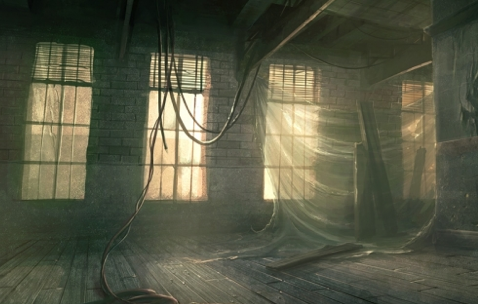
[3] A woman’s (or man’s) jealousy of her (or his) best friend takes over their life . Could link to ‘Othello’ or ‘Medusa’. Think about why. Start this when the woman is with her friend in a frenzy of jealousy…

[4] A model who has always been obsessed with her looks has acid splashed in her face and is disfigured. Could link to ‘Les Grands Seigneurs’, or ‘Mirror’ by Sylvia Plath. Start this with her looking in the mirror then opening her front door… By the way, this story is true. The woman in the picture is called Katie Piper .

[5] Fear of heights : nine year old with family who are in visiting a famous tall tower for the first time. The rest of her family want to go up the tower, but if the child won’t go up, someone will have to stay behind with them. Start this at the foot of the tower…
Want more ideas? Get a complete set plus a teaching scheme with model essays and all resources on my TES Resources shop here .

[6] Small child really wants cake but has been forbidden from taking it down from the shelf. Start this story with the child lusting after the cake, which you should describe – baking, decorating etc – in delicious detail. [ read a short, very funny version of this here ]

[7] A man is obsessed with a woman who does not love him back (or the other way round) . Could link to ‘Havisham’ by Carol Ann Duffy, ‘Give’ or ‘Alaska’ by Simon Armitage or ‘The River God’ by Stevie Smith . Start this when he realises she doesn’t love him back or when he decides to do something about it – get a haircut, stop eating raw onions, go to the gym, pretend that he also loves ‘horoscopes’ and ‘shopping’…

[8] Dangerous Ambition (links to Macbeth). Want the lead role in the school play (or to be head girl/boy)? What will you do to get it? Start this when you realise the lead is up for grabs but you’re not the first choice.

Racing Car driver (motorcross, road or drag racer) is up against his old teammate, now his main rival. Driver needs to win this one or it’s the end of his career. He sees that one of the mechanics on his rival’s car has fixed something up wrong. What does he do?

[9] Jealous woman (or man) chases husband (wife) to find out where they’re going. Could link to ‘Medusa’, ‘Havisham’, or ‘Othello’. Start this story when they decide to chase / follow. Use flashback, or recollection to explain why.

[10] Small child really wants to go to another child’s birthday party but there’s a problem. He has to go to his dad’s that weekend/hasn’t been invited/has to go to the dentist instead. How does he deal with or solve it? Start this story at the moment where the child realises he can’t go. [ read a short, hilarious one here ] III Lost

[11] An old man, who has never cooked or cleaned for himself, has just got home after his wife died (of old age, in hospital). You could link this to ‘Old Age Gets Up’ by Ted Hughes. Now he has to try to do housework – cook, etc. Could be comic / tragic.
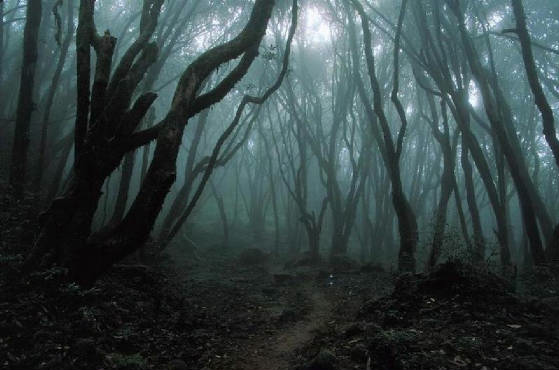
[12] You go for a forest walk (e.g. on a Geography trip or DofE) with someone you don’t like much from school and get lost. Could link to Robert Frost’s poem ‘The Road Not Taken’, ‘Storm in the Black Forest’ by D.H. Lawrence or ‘Wind’ by Ted Hughes. Start this story just before the main character begins to suspect they are lost. Start funny, ends up scary as it starts to go dark. Get describing words for a forest story here .

[13] Parent-Child: In a busy town centre, a mother loses her child who has previously been annoying her . Link this to ‘Mother A Distance Greater…’ by Simon Armitage, ‘Catrin’ by Gillian Clarke or ‘My Father Thought it Bloody Queer’. Start this with the child’s tantrum, mother’s thoughts then quickly move to realising the child is gone.

[14] World famous BMXer (or other sports person, footballer, skateboarder, surfer) is in a car crash – or other accident – and loses his leg. Will he ever ride again? This can link to ‘Out, Out-‘ by Robert Frost. For more on the guy in the photo see this video . Start this story when he wakes up in a hospital bed.

[15] A bsent father returns trying to spend time with his kids. How do they react to seeing him after so long? [this idea is done beautifully in the story, ‘Compass and Torch’ in the AQA anthology Sunlight on the Grass]. You could also link this to ‘Follower’ by Seamus Heaney. Start this when the re’s a knock at the front door.

[16] You win a million pounds on the lottery. Everyone you know wants some. What would you buy? Friendships are ruined. Then you are robbed… Start this when you check your bank balance and there are sooooo many noughts at the end it looks like a bank malfunction. IV Coming of Age

[17] Death of a pet. Ferociously funny, very short story about a girl and a fish [ here ]. Start this when you find the pet… dead, or just before. You can use flashback – when you first got the pet, etc.

[18] Learning a secret you wish you’d never found out – e.g. finding texts on your dad’s mobile from his girlfriend while your parents are still married – or learning that your mum is planning to secretly leave your dad. Start this when you’re just idly messing with the parent’s phone or laptop.
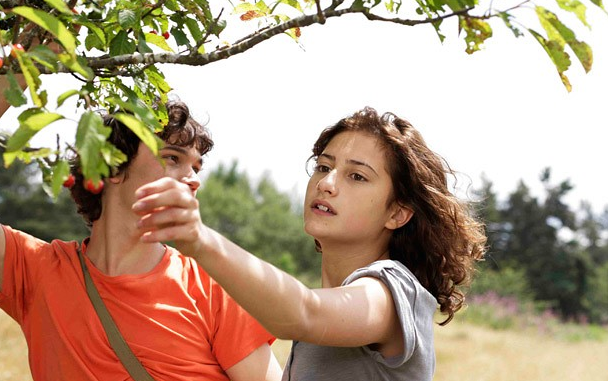
[19] falling in love for the first time , as in Romeo and Juliet. Start this when they see each other or their first proper meeting. Link this to ‘Sonnet 18 Shall I Compare Thee’, ‘Sonnet 116 Let Me Not’, ‘Quickdraw’ or ‘Hour’, by Carol Ann Duffy or ‘To His Coy Mistress’ by Andrew Marvell.

[20] The first time you have to do a really disgusting piece of housework / cook a meal for yourself and how you tackle it. Start this when you realise that no one else is going to do this foul job except you. Read a description of cooking a meal here .
V The Chase / Monsters

[21] You’re camping with your friend in the woods. Then you hear a noise outside (wolves, person, etc). Start this as you’re getting settled to go to sleep – then you hear snuffling (or whatever). Read Bill Bryson’s hilarious account of this exact event, and also an account of surviving a bear attack from the OCR exam paper here.

[22] You have something someone else wants – gold, diamonds etc. They chase you to get it. You choose the landscape: city, ruined derelict warehouses, Brazil, forest, cliffs etc. Start this at the moment you realise someone is following you. You can link this to the final chapter of Lord of the Flies .

[23] You are the last surviving human after the zombie/vampire apocalypse. Now they have found you. This is the plot of ‘I Am Legend’. You can link this to Edwin Muir’s post-apocalyptic poem ‘Horses’, ‘Wind’ by Ted Hughes or the final chapter of Lord of the Flies . Start this at the moment you (or the main character) realises someone is coming towards your hiding place.
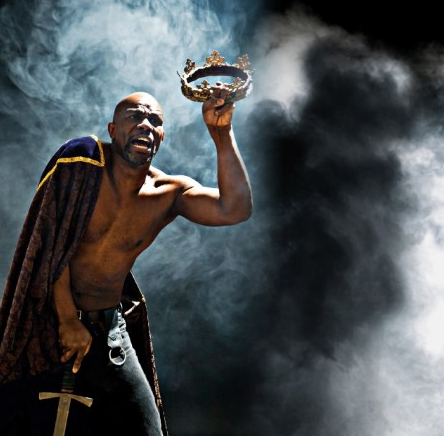
[24] The King is a tyrant who has killed your family. Now you will take revenge . Start this story as you are just about to go through the city walls.
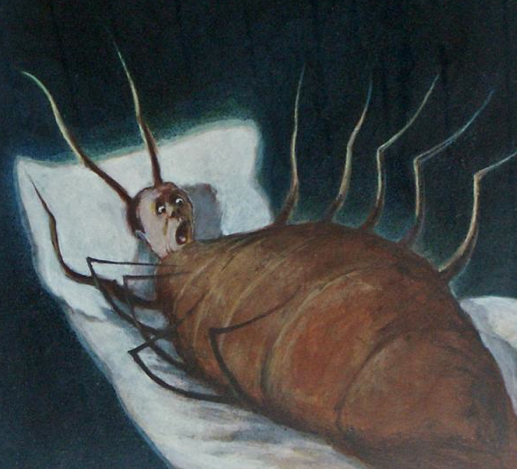
[25] You wake up and discover you have been turned into a giant insect. How does your family react? This is the plot of Kafka’s Metamorphosis. Read this here . Start at the point you wake up, and gradually realise what has happened.
Submit a Comment Cancel reply
Your email address will not be published. Required fields are marked *
Save my name, email, and website in this browser for the next time I comment.
Recent Posts
- Example English Literature Essays For Oxbridge Applications and Coursework
- What is Pathetic Fallacy? Simple Explanation for GCSE, IGCSE, and Common Entrance
- Writing to Describe Photographs of Interesting Places
- Storm on the Island Heaney: Context, Interpretation and Annotation Analysis
- The Prelude, Wordsworth: Context, Analysis, Annotation and Likely Exam Questions GCSE Poetry Exam
Recent Comments
- Student Hacks
- Studying & Revision
- Work & Jobs
10+ GCSE creative writing ideas, prompts and plot lines

Getting a good GCSE creative writing plot going can be difficult, here are some ideas to help you out.
Ahead of your exams, here are a selection of GCSE creative writing ideas and prompts to hopefully provide some inspiration.
The Lost Timepiece
Prompt: In an old, dusty attic, a teenager discovers a mysterious pocket watch that doesn’t seem to tell the correct time.
Potential Story Directions:
- The watch could transport the teenager to different moments in history whenever it's wound.
- The watch might belong to a long-lost relative, leading to a family mystery.
- The watch could be counting down to a significant event, and the protagonist must figure out what is about to happen.
The Secret Garden Door
Prompt: Behind the overgrown ivy in the school's garden, a student finds a door that wasn't there before.
- The door could lead to a magical world, offering an escape from everyday life but with challenges of its own.
- It might be a portal to the past, showing the school's history and secrets.
- The door could be a metaphorical passage to self-discovery, revealing hidden aspects of the character’s personality.
The Last Message
Prompt: A character receives a mysterious message in a bottle on the beach, written in a cryptic language.
- Deciphering the message could lead to an adventure, perhaps a treasure hunt or a rescue mission.
- The message might be from a distant land or time, offering insights into an ancient or futuristic world.
- It could be a personal message from someone significant in the character’s past, triggering a journey of emotional growth.
Midnight at the Museum
Prompt: A night guard at a museum notices that the exhibits come to life after midnight.
- The guard could interact with historical figures, learning about history firsthand.
- There might be a plot to steal an exhibit, and the living exhibits help to thwart it.
- The phenomenon could be linked to a supernatural event or an ancient curse that needs resolving.
The Forgotten Melody
Prompt: A pianist discovers an old, unplayed piano in a neglected music room that plays a melody no one seems to recognize.
- The melody could be a key to unlocking forgotten memories or a hidden past.
- It might be a magical melody, having various effects on listeners.
Each of these prompts offers a starting point for creative exploration, allowing students to develop their storytelling skills in imaginative and engaging ways.
Galactic Storm
Prompt: Astronauts on a mission to a distant planet encounter a bizarre, otherworldly storm.
- The storm could have strange, mind-altering effects on the crew.
- It might be a living entity, communicating in an unprecedented way.
- The crew must navigate through the storm to discover a hidden aspect of the universe.
Unearthed Powers
Prompt: A teenager suddenly discovers they have a supernatural ability.
- The power could be a family secret, leading to a journey of self-discovery.
- It might cause conflict with friends and society, forcing the protagonist to make difficult choices.
- The ability could attract unwanted attention, leading to a thrilling adventure.
Reflections of Reality
Prompt: A story that mirrors a significant real-life experience involving friendship or a pet.
- The story could explore the depth of human-animal bonds or the complexities of friendship.
- It might involve a heartwarming journey or a challenging ordeal.
- The protagonist learns valuable life lessons through these relationships.
Chronicle of Times
Prompt: A character discovers a way to travel through time.
- Traveling to the future, they encounter a radically different world.
- In the past, they might inadvertently alter history.
- The story could explore the moral and emotional implications of time travel.
Apocalyptic Event
Prompt: A natural disaster of unprecedented scale threatens humanity.
- The story could focus on survival, resilience, and human spirit.
- It might involve a journey to avert the disaster.
- The narrative could explore the societal changes that occur in the face of such a disaster.
The Unsolved Case
Prompt: A detective starts investigating a complex and mysterious murder.
- The investigation uncovers deep secrets and conspiracies.
- The detective's personal life might intertwine with the case.
- The story could have a surprising twist, challenging the reader's expectations.
Retold Fable
Prompt: Modernize a classic fable or story, such as the Boy Who Cried Wolf, in a contemporary setting.
- The story could be set in a modern city, exploring current social issues.
- It might be told from a different perspective, offering a fresh take on the moral of the story.
- The narrative could blend the original fable with current events, creating a powerful commentary.
Forbidden Love
Prompt: Two characters from vastly different worlds fall in love, against all odds.
- Their love could challenge societal norms and expectations.
- The story might explore the sacrifices they make for each other.
- It could be a journey of self-discovery and acceptance in the face of adversity.
Thomas Brella is the founder of Student Hacks, starting the website in 2013 while studying at the University of Brighton to share tips and tricks on life as a cash-strapped student. He's now spent over 10 years scoping out the best ways to live on a budget
Follow on Twitter
Like on facebook.

How I Would Teach… Creative Writing For AQA English Language Paper 1
How i would teach creative writing for aqa english language paper 1.
Andrew Atherton offers his advice on how to get students started with creative writing for AQA English Language Paper 1 when they don’t know how to begin.
A blank piece of paper can be a fearsome thing. Liberating to some, but anxiety-inducing to others. Nowhere is this more apparent than with creative writing. I imagine accosting a comedian whilst they’re shopping, a trolley filled with the weekly groceries, and insisting that they tell me a joke. Something splutters out, a half-joke, not really funny, and they limp off, back to the cereal aisle. Being creative on cue is never an easy task, but yet this is what is demanded of our students. ‘You have forty-five minutes’, their GCSE intones, ‘now be creative! Go!’ The clock starts to tick, louder than any clock should.
How can we help our students to crack this? They can’t rely on creativity striking at 9am on a random Friday in May. How do we transform a blank piece of paper from a source of angst to a source of enjoyment? One answer lies in teaching, rehearsing and modelling certain generative structures that students can depend upon, both to shape their response and to plan it.
Such structures not only prime student thinking, giving them a much needed starting point, but they feed forward into the piece of writing. This article outlines one such structure that you can use with your own students, either as something to rehearse or to model.
A Photograph Finish!
This strategy works best with a question that asks students to respond to an image, an increasingly common style of question. However, even if it doesn’t use this format, students can still utilise this structure. For ease, we’ll imagine the student is presented with some kind of image or photograph.
This structure works by imagining that you, as the narrative voice, are holding this image (whatever it is) as a photograph or, if it fits better with the task, a work of art. The given image is not just an image, but a photograph or a framed piece of art. Whatever the image is, students can just imagine it is framed and that they are physically holding it in their hands. This initial premise can offer students so many ideas and directions, which is precisely why it works well. Let’s consider what could happen next, as a series of four steps.
Step 1 – The Photograph
Students begin with a description of the physical photograph itself. What might they begin to think? Is it torn? It is fading? Is it recent? Do the edges slightly curl after many years of being looked at and handled? Is it colour or black and white? Is it in a shoe box or a family album or a decorative photo frame? How does it feel in the hand? Light like a feather or somehow heavy? What does it smell like?
If the given image is a painting then has it been rolled up or is it proudly displayed in a frame? Here, students are not describing the image, or perhaps just in passing, but rather they’re describing the perimeter or parergon of the image: its physical, corporeal existence as you hold it in your hand.
Step 2 – Your Hands
Now, students have two options, one of which I much prefer. The first option is to zoom into the image itself and describe the scene a little. Again, perforating any description with reminders that the narrator is holding it physically in their hand. It has a weight to it. A sensation.
The second option, though, and my preferred one, is to zoom into the hands holding the photograph. What do they look like? How are they holding it? Do they tremble? Do they clutch? Do they hold it at the fingertips, almost pinching the photograph? Are these hands wrinkled? Are they young? Are they cracked? Knotted? Knuckled? Do these hands hold it closer or at a distance?
This could turn into a masterclass of ‘show don’t tell’: what can we suggest to the reader about (1) this person, the ‘I’ of the response, and (2) their relationship to whatever it is they are holding? How can we tell a story without actually telling it?
Step 3 – Origin Story
At this point, students deal more directly with the image itself. The ‘I’ of the piece now recalls via a flashback the day the photograph was taken. What was happening? Where was it? What was the weather like? How long ago was it? How did they feel? Who else was there?
Students begin to build a sense of the narrator’s relationship to the image, engaging with wider ideas of transience and memory. If earlier in the piece the photograph was described as having crumpled edges from being looked at and handled over many years, what was it about this day that caused it? Why is it important?
Students might now shift into description of a more traditional kind as they cast their narrative gaze over the landscape, the sounds, the smells, the people, the weather, the colour of the sky, and how this makes the narrator feel and why it has reverberated in their mind over the years.

Step 4 – Lay to Rest
Students now return to the physical artefact of the photograph. The narrator is holding it again. What do they do with it? Do they lay it gently into a box? Do they crumple it up and shove it back into a shoe box, watching as the lid folds darkness around it? Do they hold it close? What are their hands doing? How do they feel? The final action the narrator takes tells the reader a lot about the relationship they have to this photograph and what it depicts.
Why Does This Work So Well?
There are a few reasons I think this approach works so well. Here are just a few:
- It provides students a set of prompts and self-generated questions to cue their thinking as they write and plan: How does the narrator hold the photograph? When was it taken? Who was there? What was the weather like, and so on. For students that may struggle to find a way into their creative writing, this set of cues is absolutely groundbreaking. Suddenly they are free from trying to devise a ‘set up’ to their piece and can focus instead on their control of language and choice of imagery.
- It almost has built in some of the features that often characterise a top response: a central motif that runs throughout the piece (the idea of a photograph), perspective shifts (from the photograph to the hands to the flashback), a tightly controlled structure (photograph, hands, memory, photograph), as well as a bank of imagery related to time and memory to call upon. But, again there is more than enough creative space for students to transform this premise and shape into something genuinely imaginative and emotive.
- Indeed, following the above, it offers a conceptual thread to their response that is really important but difficult to pin down: time and memory. If we imagine the shift from wrinkled hands holding the photograph to youthful hands the day it was taken, embedded into this is a potentially incredibly powerful meditation on the transience of time and the memories we hold onto. Equally, describing the photograph at the start as having curled, faded edges again taps into this. So, it gives a substantive shape to something, by its nature, very abstract and conceptual.
- Another aspect of this approach that I really like is that it again has embedded within its structure really effective opportunities for inference and ‘show don’t tell’. If we wish to express sadness, we don’t need to say this and instead we can describe how the hands ‘trembled’ whilst ‘clutching onto the edges of the photograph, a fresh dampness falling onto the plastic film and bringing to life once again the rain suspended by the camera’s click’. Students can imply the relationship between the narrator and the image by how the narrator handles and touches the physical artefact. It is again making concrete something that is often very abstract, and providing the cues that help students to think about it.
- One final aspect of this overall strategy that I think is great is the opportunity to teach students about ekphrasis. We can talk about how this basic idea (a descriptive piece about holding a photograph or work of art) taps into a rich repository of literary work broadly aligned to ekphrasis. We could, for instance, introduce this approach alongside Keats’ ‘Ode on a Grecian Urn’, exploring how Keats too imagines a moment caught in time and how he also uses this to explore ideas such as the transience of time.
Now, whether or not you aim to teach this as a set shape or framework for students to use in the exam itself, there is of course another benefit to this strategy. A benefit for us. In the same way this approach offers students a set of prompts to think their way through a response, it also offers us a series of cues to help model creative writing.
Whenever I am introducing creative writing at GCSE, this shape tends to be the first full example I model to students. It works exceptionally well for this as it demonstrates and elucidates many of the typical characteristics of an excellent piece of descriptive writing as well as offering a set of ready-made cues to help me to verbalise my thought process as I live model.
Given there are so many different ways we could take this response, it also offers enough freedom for students to add their thoughts as we do it together and even produce a follow-up with a different image.
This basic shape, as well as the ideas it helps to generate, will ensure students always have at least a starting point. Now when they’re told to be creative, they’ll at least have a punch line.
You can read more articles by Andrew Atherton here .

Andy Atherton is a Teacher of English as well as Director of Research in a secondary school in Berkshire. He regularly publishes blogs about English and English teaching at ‘Codexterous’ and you can follow him on Twitter @__codexterous
Related Posts
Making shakespeare relevant for all, encouraging participation in sport for all, how to interpret the writing moderation criteria for the end of key stage 2, write a comment cancel reply.
Save my name, email, and website in this browser for the next time I comment.
- News and Analysis
- Download Latest Edition
- Charity Partners
- Subscribe to HWRK Magazine
- Write For Us
- Mission Statement
- Terms and Conditions
- Our Company Privacy & Cookie Policy
Type above and press Enter to search. Press Esc to cancel.

Paper 1 Q5 - Ideas
focus: description / narrative marks: 40 time: 45 mins.
Ideas for creative writing can come from various places.
The picture
There will always be a picture to inspire you. It could be linked to a description or a narrative. Remember that you can go beyond the picture and interpret it in any way you like. It's there to help you, not restrict you. For example, in the picture of the market in the example question here you could imagine people, food and objects that aren't in the picture.
The reading source
The topics for the writing will be linked to the reading source, so you can get inspiration from it. In the example question we looked at here, the story in Section A involved a girl being left on the roadside by her father. This might give you ideas for a story about being 'abandoned'.
Books/films/TV/games
It's fine to take ideas from other things you've seen or read, but try to make it your own. Change names -the examiner doesn't want to read about another Harry Potter or Luke Skywalker. Plots for whole films or books are far to complicated to reproduce in a short story. Just take a particular moment or scene for inspiration. For example, the moment a child finds out they have magical powers or when a young man finds out who his father is.
Using events from your own life is fine - just remember not to write it in a factual way. It needs to be full of descriptive language.
Paper 1: Creative Writing
In the exam you're normally given two options: a descriptive piece or a narrative piece. neither is worth more or less than the other so it's up to you to choose which suits you best. though describing the same thing for 45 minutes can see a little tough, i'd argue that the description is actually easier than the narrative. the problem with writing a short narrative, is its shortness., to do this well you need to make sure that your plot is very, very , very , very simple . you'll only have 45 minutes to write it, and that doesn't leave a lot of space for character development or events., really, you should be able to tell your storyline in one sentence, any more than that and it's probably too complex for the exam., i've included some of my own below to give you an idea of how much plot i've managed to include....
The Simple Scene
Perspectives
An Unreliable Narrator
Using Description
Read over the stories above and pick one structure that you think you could use. then, google some images and see if you can find a way for your chosen structure to become a story connected to that image. the key with a structure is that you can practice with it, but it will still fit any end you choose., but also, there are literally millions of short stories on the web, simply because writing is such a pleasure and sharing stories is so fundamentally human. to help you filter through some of them, you'll find a list of some of my favourite places below:, https://themolotovcocktail.com/, https://wigleaf.com/, https://blog.reedsy.com/short-stories/, https://www.flashfictiononline.com/.
Part of English Language
Audience, purpose and form - AQA
Establishing audience, purpose and form allows you to choose the most appropriate language, tone and structure.
Writing fiction - AQA
Writing fiction is an opportunity to come up with creative and original ways of using language. You might find inspiration from your own experiences or from your imagination.
Writing non-fiction - AQA
Non-fiction texts are those that deal with facts, opinions and the real world. Many non-fiction texts follow specific conventions of language and structure.
Planning - AQA
It’s always a good idea to plan before you write. You can gather your main ideas, list vocabulary you’d like to include and map out your structure in a way that makes writing easier.
Organising information and ideas - AQA
Well-organised writing is easy to follow and understand. Points follow on from and build upon each other to lead to clear conclusions.
Using language effectively - AQA
Writers use language to create different effects. Learning how to use these will make your writing more engaging.
Vocabulary - AQA
Make your writing interesting and lively by using a wide range of vocabulary. Use specific words to convey your meaning.
Personalise your Bitesize!
Jobs that use English
BBC Young Writer's Award
BBC News: School Report
BBC Writersroom
Pearson Education
- External link External link
Fast Past Papers
TES: English resources
- Subscription Subscription
This website works best with JavaScript switched on. Please enable JavaScript
- Centre Services
- Associate Extranet
- All About Maths
GCSE English Language
- Specification
- Planning resources
- Teaching resources
- Assessment resources
- Introduction
- Specification at a glance
- 3.1 Scope of study
Scheme of assessment
- Non-exam assessment administration
- General administration
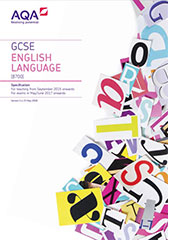
Find past papers and mark schemes, and specimen papers for new courses, on our website at aqa.org.uk/pastpapers
This specification is designed to be taken over two years with all assessments taken at the end of the course.
GCSE exams and certification for this specification are available for the first time in May/June 2017 and then every May/June and November for the life of the specification.
This is a linear qualification. In order to achieve the award, students must complete all exams in November or May/June in a single year. All assessments must be taken in the same series. November entries will only be available to students who were at least 16 on the previous 31 August. See Resits and shelf life in the General administration section for November entry restrictions.
- provide extended responses
- demonstrate their ability to draw together different areas of knowledge, skills and/or understanding from across a full course of study for this qualification.
The final reading question on each paper - Question 4 on Paper 1 and Question 4 on Paper 2 allows students to fulfill this requirement.
All materials are available in English only.
Aims and learning outcomes
Courses based on this specification should encourage students to:
read fluently and write effectively. They should be able to demonstrate a confident control of Standard English and they should be able to write grammatically correct sentences, deploy figurative language and analyse texts.
Courses based on this specification should enable students to:
- read a wide range of texts, fluently and with good understanding
- read critically, and use knowledge gained from wide reading to inform and improve their own writing
- write effectively and coherently using Standard English appropriately
- use grammar correctly, punctuate and spell accurately
- acquire and apply a wide vocabulary, alongside a knowledge and understanding of grammatical terminology, and linguistic conventions for reading, writing and spoken language.
- listen to and understand spoken language, and use spoken Standard English effectively.
The Spoken Language endorsement will be reported on as part of the qualification, but it will not form part of the final mark and grade.
Explorations in creative reading and writing
- in section A, reading a literature fiction text in order to consider how established writers use narrative and descriptive techniques to capture the interest of readers
- in section B, writing their own creative text, inspired by the topic that they have responded to in section A to demonstrate their narrative and descriptive skills in response to a written prompt, scenario or visual image.
The paper will assess in this sequence, AO1, AO2 and AO4 for reading, and AO5 and AO6 for writing. Section A will be allocated 40 marks, and Section B will be allocated 40 marks to give an equal weighting to the reading and writing tasks.
The source for the reading questions will be a literature fiction text. It will be drawn from either the 20th or 21st century. Its genre will be prose fiction. It will include extracts from novels and short stories and focus on openings, endings, narrative perspectives and points of view, narrative or descriptive passages, character, atmospheric descriptions and other appropriate narrative and descriptive approaches.
As a stimulus for students’ own writing, there will be a choice of scenario, written prompt or visual image that is related to the topic of the reading text in section A. The scenario sets out a context for writing with a designated audience, purpose and form that will differ to those specified on Paper 2.
Writers’ viewpoints and perspectives
- in section A, reading two linked sources from different time periods and genres in order to consider how each presents a perspective or viewpoint to influence the reader
- in section B, producing a written text to a specified audience, purpose and form in which they give their own perspective on the theme that has been introduced to them in section A.
The sources for the reading questions will be non-fiction and literary non-fiction texts. They will be drawn from the 19th century, and either the 20th or 21st century depending on the time period assessed in Paper 1 in each particular series. The combination selected will always provide students with an opportunity to consider viewpoints and perspectives over time. Choice of genre will include high quality journalism, articles, reports, essays, travel writing, accounts, sketches, letters, diaries, autobiography and biographical passages or other appropriate non-fiction and literary non-fiction forms.
In section B, there will be a single writing task related to the theme of section A. It will specify audience, purpose and form, and will use a range of opinions, statements and writing scenarios to provoke a response.
Non-exam assessment
- giving a presentation in a formal context
- responding appropriately to questions and to feedback, asking questions themselves to elicit clarification
- using spoken Standard English.
Students must undertake a prepared spoken presentation on a specific topic. The topic is at the discretion. As a guide, the duration should be no more than ten minutes. The key requirements are:
- presentations must be formal but may take a wide variety of forms, including talks, debates, speeches and dialogues
- students must identify the subject for their presentations in advance and agree it with their teacher
- presentations must be planned and organised. Students should be advised that that lack of preparation is likely to prevent access to the criteria for the higher grades
- students may use pre-prepared notes, powerpoint etc. to assist them during their presentations but this is not a requirement
- as part of, or following, the presentation students must listen to and respond appropriately to questions and feedback
- where the audience is the teacher only, the presentation and dialogue must be designed in such a way that it could have a potentially wider audience than just one person (eg it replicates a television interview).
Assessment objectives
Assessment objectives (AOs) are set by Ofqual and are the same across all GCSE English Language specifications and all exam boards.
The exams and Spoken Language endorsement will measure how students have achieved the following assessment objectives.
- identify and interpret explicit and implicit information and ideas
- select and synthesise evidence from different texts
- AO2: Explain, comment on and analyse how writers use language and structure to achieve effects and influence readers, using relevant subject terminology to support their views
- AO3: Compare writers’ ideas and perspectives, as well as how these are conveyed, across two or more texts
- AO4: Evaluate texts critically and support this with appropriate textual references
- AO5: Communicate clearly, effectively and imaginatively, selecting and adapting tone, style and register for different forms, purposes and audiences. Organise information and ideas, using structural and grammatical features to support coherence and cohesion of texts
- AO6: Candidates must use a range of vocabulary and sentence structures for clarity, purpose and effect, with accurate spelling and punctuation. (This requirement must constitute 20% of the marks for each specification as a whole.)
- AO7: Demonstrate presentation skills in a formal setting
- AO8: Listen and respond appropriately to spoken language, including to questions and feedback on presentations
- AO9: Use spoken Standard English effectively in speeches and presentations.
Weighting of assessment objectives for GCSE English Language
Assessment weightings.
The marks awarded on the papers will be scaled to meet the weighting of the components. Students’ final marks will be calculated by adding together the scaled marks for each component. Grade boundaries will be set using this total scaled mark. The scaling and total scaled marks are shown in the table below.

AQA English Language – Opening Lines for Creative Writing (Q5)
.jpg?width=50&name=douglas-wise%20(2).jpg)
Click on the link above to access a Word document containing some famous opening lines and a few discussion questions, and then suggestions at the end for starting creative pieces (i.e. for AQA Paper 1, Q5). Novels listed below.
- City of Glass , by Paul Auster
- Beloved , by Toni Morrison
- The Unnamable , by Samuel Beckett
- Slaughterhouse Five , by Kurt Vonnegut
- The Colour Purple , by Alice Walker
- The Go-Between , by L. P. Hartley
- Herzog , by Saul Bellow
- The Secret History , by Donna Tartt
- Cat’s Eye , by Margaret Attwood
- The Reluctant Fundamentalist , by Mohsin Hamid
- The Trial , by Franz Kafka
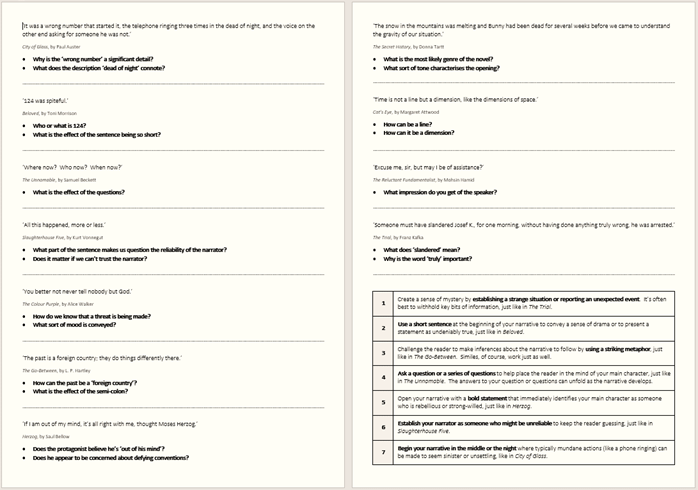
And here are the suggestions…
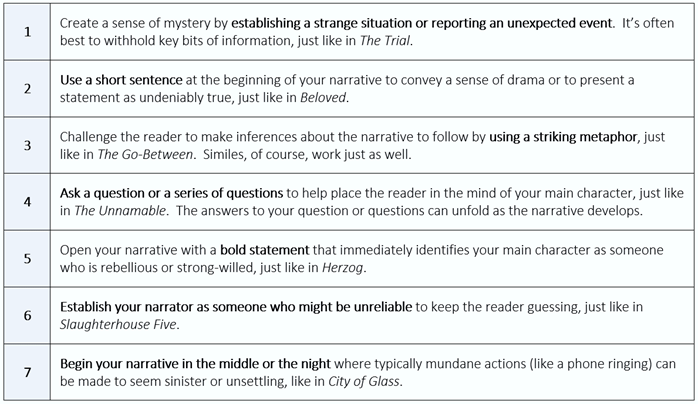
Hope the stuff’s useful. Feedback always welcome and I always enjoy hearing how the resources used.

Related posts
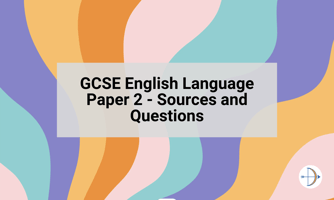
GCSE English Language Paper 2 - Sources and Questions
Click on the button above to access sources and questions for a couple of GCSE English Language...
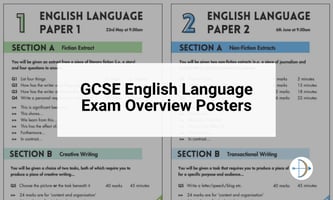
GCSE English Language Exam Overview Posters
Click on the button above to access an overview of the AQA GCSE English Language exams. They’re...
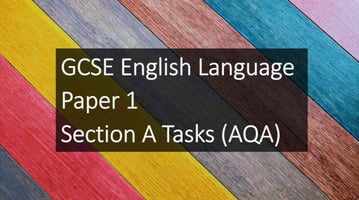
GCSE English Language, Paper 1, Section A Tasks (AQA)
Click on the button above access five GCSE English Language extracts and accompanying Section A...
- International
- Schools directory
- Resources Jobs Schools directory News Search

AQA GCSE titles for creative writing
Subject: English
Age range: 14-16
Resource type: Assessment and revision
Last updated
21 March 2018
- Share through email
- Share through twitter
- Share through linkedin
- Share through facebook
- Share through pinterest

Using the sample question as a starting point, I have devised questions on different topics which may be useful for class/group work and/or private revision/practice/homework
Creative Commons "Sharealike"
Your rating is required to reflect your happiness.
It's good to leave some feedback.
Something went wrong, please try again later.
thanks, really helped with my work..
Thanks for taking the time to post a review -especially 5*. 😀
Empty reply does not make any sense for the end user
Thank you too! 😊
jopieteacher
Report this resource to let us know if it violates our terms and conditions. Our customer service team will review your report and will be in touch.
Not quite what you were looking for? Search by keyword to find the right resource:

COMMENTS
Unit 2 Reading and Writing: Description, Narration and Exposition gives two prompts to choose between, for an account and an essay perhaps, and Unit 3: Reading and Writing: Argumentation, Persuasion and Instructional sets up a letter, or similar. Jump ahead to WJEC Eduqas non-fiction writing prompts from past GCSE papers.
The style of the writing (sentence structure and overall structure) is dynamic and engaging; Below you will find a detailed creative writing model in response to an example of Paper 1 Question 5, under the following sub-headings (click to go straight to that sub-heading): Writing a GCSE English Language story; Structuring your story
II. Desire. [6] Small child really wants cake but has been forbidden from taking it down from the shelf. Start this story with the child lusting after the cake, which you should describe - baking, decorating etc - in delicious detail. [ read a short, very funny version of this here]
Organise information and ideas, using structural and grammatical features to support coherence and cohesion of texts. ... that make the very best creative writing, in the form of narratives or descriptions, come alive. ... Writing creatively 121 8. 1 AQA GCSE English Language and English Literature: Advanced Student Book. Chapter 8 .
Retold Fable. Prompt: Modernize a classic fable or story, such as the Boy Who Cried Wolf, in a contemporary setting. Potential Story Directions: The story could be set in a modern city, exploring current social issues. It might be told from a different perspective, offering a fresh take on the moral of the story.
This booklet is to support your creative writing practice in preparation for your GCSE Language exam. There are two papers: Paper 1 and Paper 2. In Paper 1, the last ques-tion is 40 marks. It will ask you to write either a description as suggested from a picture, or a short story. 24 of these marks are for the ideas you put on the page. 16 of these
Overview of Paper 1 Question 5. Paper 1 Question 5 is the writing question. It asks you to apply what you know about imaginative and creative fiction writing, such as in the text you read in Section A, and use these same techniques in your own writing. AO5 rewards you for your ideas, as well as the style and the fluency of your writing.
Think about the individual parts of the question and which angles you could take. Some exam boards, including AQA, will give you an image for example, so you could use this to form the basis of your writing.. This will grab the examiner's attention by showing that you are able to respond to a prompt and engage in specific questions creatively.. On the other hand, other exam boards, such as ...
A benefit for us. In the same way this approach offers students a set of prompts to think their way through a response, it also offers us a series of cues to help model creative writing. Whenever I am introducing creative writing at GCSE, this shape tends to be the first full example I model to students.
Ideas for creative writing can come from various places. . The picture. There will always be a picture to inspire you. It could be linked to a description or a narrative. Remember that you can go beyond the picture and interpret it in any way you like. It's there to help you, not restrict you. For example, in the picture of the market in the ...
creative writing on the given focus but use the picture as a springboard for their imaginations - suggested by means just that. AQA Education (AQA) is a registered charity (number 1073334) and a company limited by guarantee registered in England and Wales (number 3644723). Our registered address is AQA, Devas Street, Manchester M15 6EX. 6 of 36
pdf, 1.72 MB. These questions are suitable for students and writers of all levels; they are intended to help individuals to explore a range of possible scenarios and environments. They are tailored towards GCSE AQA English students, but suitable for other GCSE and iGCSE exam boards. This digital + printable pdf resource includes the following:
Paper 1: Creative Writing. In the exam you're normally given two options: a descriptive piece or a narrative piece. Neither is worth more or less than the other so it's up to you to choose which suits you best. Though describing the same thing for 45 minutes can see a little tough, I'd argue that the description is actually easier than the ...
Narration - the voice that tells the story, either first person (I/me) or third person (he/him/she/her). This needs to have the effect of interesting your reader in the story with a warm and ...
Assessment resources. Page. 1. 2. Paper 1. Showing 35 results. Question paper: Paper 1 Explorations in creative reading and writing - Sample set 1. Published 18 Nov 2014 | PDF | 219 KB. Mark scheme: Paper 1 Explorations in creative reading and writing - Sample set 1.
Writing fiction - AQA. Writing fiction is an opportunity to come up with creative and original ways of using language. You might find inspiration from your own experiences or from your imagination.
Section B: Writing rules. You are advised to spend about 45 minutes on this section. Write in full sentences. You are reminded of the need to plan your answer. You should leave enough time to check your work at the end. You are going to enter a creative writing competition.
Image Prompts - Descriptive Writing - Language Paper 1, Q5. A set of 15 images each with adjectives, verbs, descriptive techniques and sentence starters to use. All images found via a Google image search and belong to their respective owners. Report this resource to let us know if it violates our terms and conditions.
GCSE exams and certification for this specification are available for the first time in May/June 2017 and then every May /June ... writing their own creative text, inspired by the topic that they have responded to in section A to demonstrate their narrative and descriptive skills in response to a written prompt, scenario or visual image ...
Click on the link above to access a Word document containing some famous opening lines and a few discussion questions, and then suggestions at the end for starting creative pieces (i.e. for AQA Paper 1, Q5). Novels listed below. City of Glass, by Paul Auster; Beloved, by Toni Morrison; The Unnamable, by Samuel Beckett; Slaughterhouse Five, by ...
Put your GCSE English Language students to the test with our Writing a Prompt lesson, the eighth in our series of Creative Writing lessons. In this lesson, students are tasked to plan short stories based on picture prompts with plenty of guidance. This is a great way to monitor how well students are progressing and highlight any potential areas worth revisiting. Take a look at our Writing to ...
AQA GCSE titles for creative writing. Subject: English. Age range: 14-16. Resource type: Assessment and revision. File previews. doc, 20 KB. Using the sample question as a starting point, I have devised questions on different topics which may be useful for class/group work and/or private revision/practice/homework. Creative Commons "Sharealike".